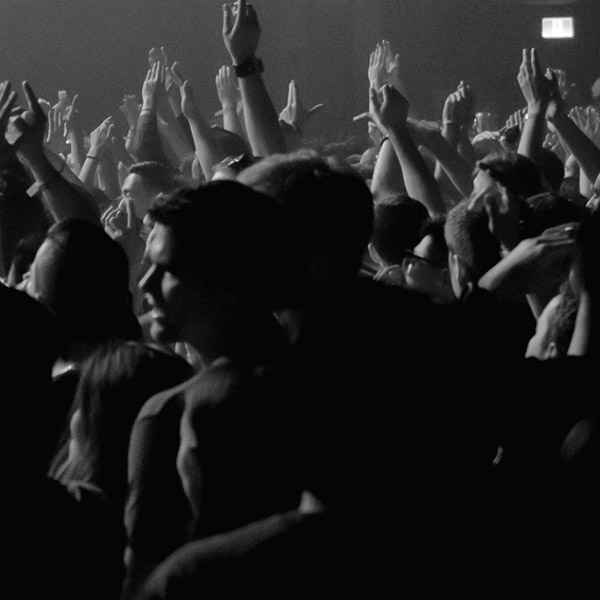VENU Founder JW Roth On Building the Future of Premium Concerts: ‘I Have to Be Hands-On On Crazy Concepts’
To JW Roth, the future of the concert business looks a little like his own backyard. At his Colorado Springs, Colo., estate, the 62-year-old says he has “the largest residential firepit in the world” — approximately 300 square feet — around which he constructed “a small venue” where he gathers over 100 people for private concerts.
The fifth-generation Coloradan made his name as a founder of Roth Premium Foods, currently the third-largest prepared-food company in the United States. But despite lacking a professional background in entertainment or hospitality, the lifelong music fan and concertgoer got to thinking: What if the historically spartan amphitheater experience was more similar to his spacious, relaxed backyard?
With VENU Holding Corporation, which launched in 2017 as Notes Live, Roth wants to deliver his solution to markets across America. Today’s audiences are increasingly gravitating toward premium live-music offerings, and he’s betting that demand will sustain a fleet of high-end amphitheaters: Roth wants to build eight a year for the next three years, ranging in construction price from $130 million to $325 million, and he currently has over $1 billion in active projects in markets in Texas (Dallas, El Paso), Oklahoma (Tulsa, Oklahoma City) and Colorado (Denver). (In June, Billboard struck a three-year partnership with VENU that will power some of Billboard’s marquee events as well as a new award honoring industry disrupters.)
Roth also has a venue he can point to as proof of concept: Colorado Springs’ 9,750-capacity Ford Amphitheater, which VENU opened last August at the base of Pikes Peak. Booked by AEG, Ford’s 2025 calendar includes dates by Chicago, “Weird Al” Yankovic and King Gizzard & The Lizard Wizard. During shows, concertgoers enjoy such posh amenities as elevated food and beverage options, temperature-regulating artificial turf for general admission and, for some, 132 luxury firepit suites — inspired by Roth’s backyard.
Those suites aren’t just the best places to watch a show at Ford — available for purchase at a smooth $250,000 — they’re core to Roth’s “fractional ownership” model, which he compares to how The Ritz-Carlton sells timeshares. Five months after putting Ford’s up for sale, he says he had sold them all out to the tune of $33 million.
As Roth eyes expansion for VENU, he’s keen on making his customers investors in his business, which is already listed on the New York Stock Exchange. Certain share purchases even come with loyalty perks such as free concerts.
Roth says his decision to take VENU public was inspired by an entrepreneur very much in the news these days. “Love him or hate him, I am a fan of Elon Musk,” he says. “Some days you love him, and some days you question him, right? But I thought he did a terrific job of inviting his customer to be his shareholder, and I admired him for that.”
Why did you think applying premium experiences to outdoor amphitheaters would work?
I know the fan. I go to so many concerts, and I’m around [them] all the time. I know that there is a segment of fans that would embrace the premium experience. I needed to prove it, but I knew it would happen. Every area [at Ford] is premium, whether you’re buying a $45 lawn ticket — it’s the most premium lawn ticket you’ll buy in all of music — or you’re buying a lower-bowl regular seat or a club seat.
What’s your financing model?
The municipalities participate to the tune of about 40% of the overall cost. And that comes in three ways. The municipalities that I work with have contributed the real estate, infrastructure and abatements on property taxes and rebates on sales tax. When you take those three buckets, it’s about 40% of the entire project cost. Secondarily, fractional ownership represents about 40% of the overall cost. The last 20% comes from the profitability of our current existing operations. And our current and existing operations were all financed by, primarily, me.
How did you choose Colorado Springs as the first market?
That’s where I grew up. I’ve lived here for 62 years. I have to be hands-on on crazy concepts that I have, whether it’s building a nutty thing in my backyard or an amphitheater. I knew that I could ultimately roll these out across the country, but the first one I had to live there every day, and I had to sit in every seat. All my seats I had custom-made in China. They’re 3 inches wider than any other seat in music today; they’re comfortable. Each one of them has a cup holder and extra room for people to walk by. Everything about [Ford] is different. It cost me 5 acres more to build [Ford] because I wanted it roomy in those kinds of areas.
You’re partnered with AEG for Ford and are exploring partnerships with Live Nation in other markets where VENU is in development. What has fostering relationships with those competitors been like?
In my mind, they’re segregated. At the end of the day, business is about fostering relationships, whether I’m selling chicken or building amphitheaters. I foster relationships with both because they both have a place in this world that I’m trying to build.
How do the venues you’re building in Texas and Oklahoma differ from Ford?
The next venues that I’m building will be the first multiseasonal outdoor amphitheaters ever created. I want to be able to have a show comfortably at 70 to 75 degrees when it’s snowing outside. Obviously, it’s costing a lot more money to build these, but I will program them year-round. There’s a difference between seeing a show in February in a hockey arena and seeing a show in a fan-centric, perfect-sound environment outside [where] it’s snowing and it’s 75 degrees.
How did you choose Oklahoma and Texas?
My site selection always starts with, “What does natural routing look like?” Coming from Colorado Springs, natural routing would be Kansas City, Tulsa, Oklahoma City [and Texas markets] Dallas, Fort Worth, El Paso and/or Houston. I go into those markets [to determine], “Do they have an amphitheater? If they do, is it cool or is it at the zoo?” Then I reach out to those municipalities. Does the demographic fit the demographic of both the firepit suite buyer and the [standard] ticket buyer? Is the [metropolitan statistical area] bigger than a million people? Then at the end of the day, I reach out to my partners, the Live Nations and the AEGs, and go, “Can we program this? If I do it and I spend $200 million or $300 million doing it, can we program it?”
El Paso — I’m so damn excited about it I can’t see straight. Because I think the south side of the [border] will produce as many ticket buyers as the north side. Latin music is exploding to the point that that amphitheater will roar. I fly to Mexico City early next week, and I’m working with a big organization there — I can’t tell you who it is — to really develop the idea in El Paso, and then, ultimately, my first venue I’m going to build outside the country will be in Mexico.
You mentioned natural routing. As VENU expands, do you envision creating a network of venues that artists could route entire tours through?
I don’t know if it ultimately goes there, but I’m building it that way in the event that it does. But today it doesn’t.
With that in mind, can you share any details about future markets you’re targeting?
I’m going to come up through Florida, the Carolinas, Georgia, Tennessee. I’ve got two routes that we’re very close to being able to announce later this year, but I am hell-bent to get onto the East Coast.
This story originally appeared in the June 21 issue of Billboard magazine.
Eric Renner Brown
Billboard










